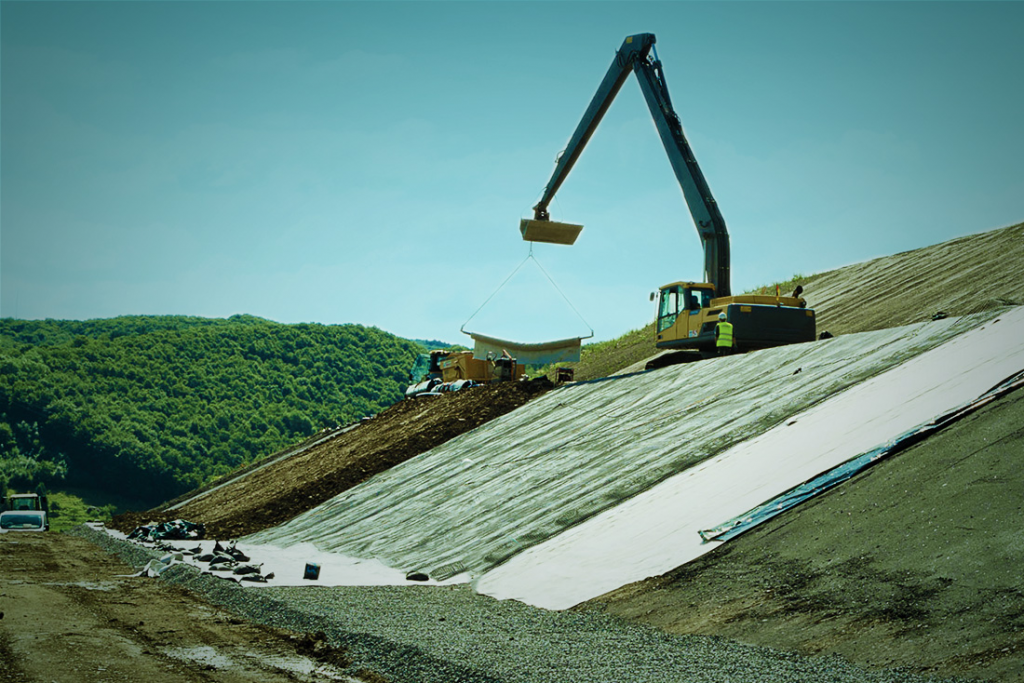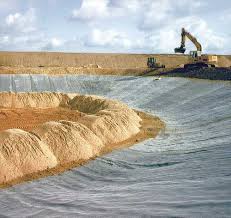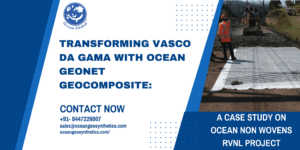Geotextiles for Slope Stabilization

Natural and human-made forces create a lot of disruption from time-to-time and change the entire earth’s topography. Rampant urbanization has led to deplorable deforestation, which in turn is responsible for soil erosion. Slope failures and instability result in not just environmental and economic losses but human loss as well. While some failures are sudden and disastrous, others are more subtle. Ocean Geotextiles play a significant role in slope stabilization. Let us see how.
Table of Contents
What are slopes?
Slopes are mostly natural landscape elements but can also be found in human-made structures like highways, dams, and canals. We have even constructed roads in the proximity of slopes in many regions. Many civil engineering and mining projects also include demolition and excavation, again leading to slope formation.
What leads to instability of slopes?
The problem occurs when there is a shift in the soil, destabilizing structures. In order to provide slope stabilization, it is necessary to know the causes of instability. Some of the factors that lead to instability of slopes are erosion, rainfall, earthquakes, external loading, construction activities, rapid drawdown, and geological features.
Solution: Ocean Geotextiles for slope stabilization
Saving the steep slopes and embankments, once a tedious and exerting job requiring many calculations and thought, is now a tad more manageable thanks to the advent and massive use of geotextiles in environmental engineering.
The solution for slope stabilization depends on the slope gradient, the purpose of stabilization, time available, accessibility of the site, cost of repair, and the construction equipment available. The most common techniques are geometric techniques, hydrological techniques, and finally, chemical and mechanical techniques.
The chemical and mechanical techniques work by increasing the shear strength of the soils/rock masses and minimizing external forces triggering a failure.
Ocean Geotextiles, with their flexibility, versatility, high tensile strength, and high permeability, are ideal in applications for slope stabilization. The Ocean Geotextiles like Ocean Geonet not just help with erosion control but promote vegetation along slopes, protecting them. Made of extruded HDPE, it can combine with other geotextile fabrics and adapt to the geological variability of soils.
Specifically designed for soil stabilization, strengthening, preventing, and correcting erosion, and foster regeneration of vegetation, the Ocean Geonet is the perfect choice that also helps in reducing the overall carbon footprint.
What makes Ocean Geonet ideal for slope stabilization?
UV Resistance: They resist degradation upon exposure to ultraviolet radiation from natural sunlight. The high-quality Ocean Geonets come with high-performance stabilizers making them suitable for long-term applications.
Chemically Inert: Polypropylene geotextiles have excellent resistance to acidic and alkaline conditions and displays no strength loss.
Biological Resistance: Another plus is the resistance of polypropylene to microorganisms, further prolonging its life.
The ribs in the Ocean Geonet act as check dams and slow down the surface runoff while allowing water to flow through. It provides the necessary root support and moisture retention for sustained growth of the chosen vegetation along the slope. The ease of installation makes it the best alternative to the traditional and more expensive solutions.
Wondering where to buy geotextile fabrics for your project? Look no further than Ocean Geosynthetics.
Ocean Geonets are capable of combating hostile environments and are durable enough to last long.
Ocean Non Woven Geosynthetics offers a wide variety of environmentally-prudent and financially smart geosynthetics products and materials with varying configurations and strengths to minimize soil erosion and enhance slope stability.



